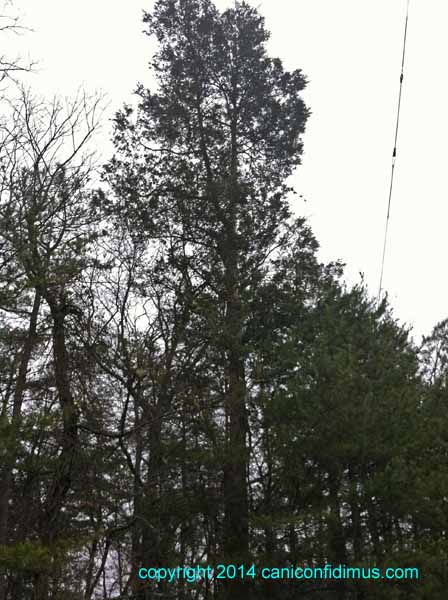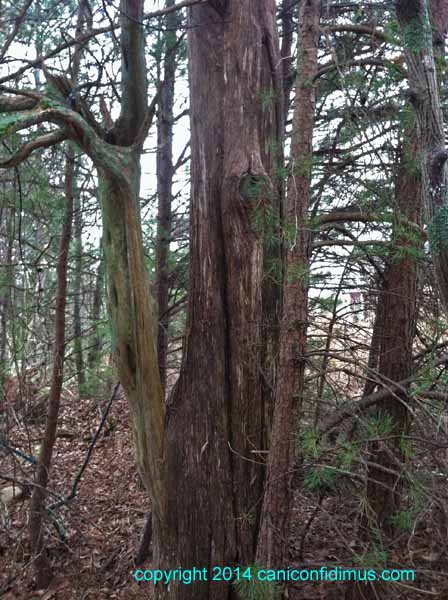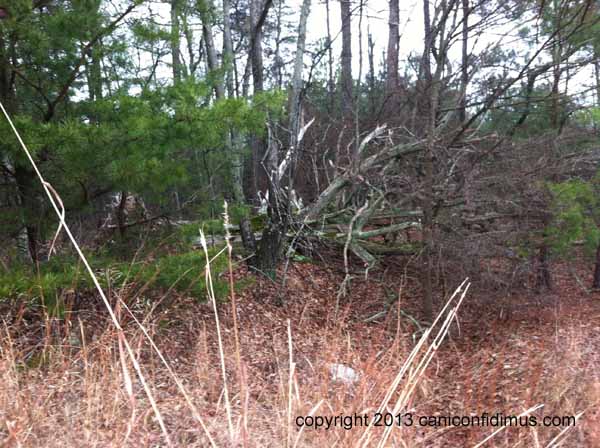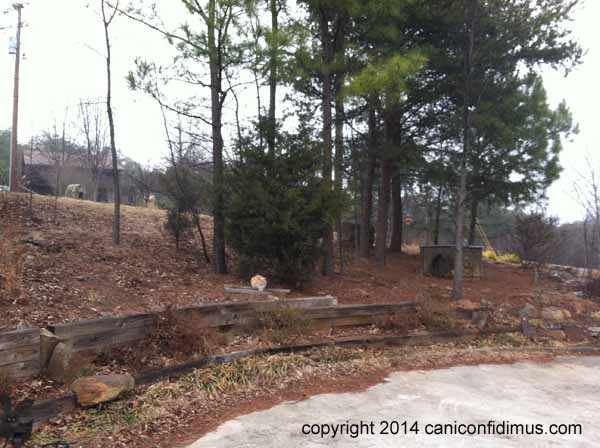Wayne identified the dead trees I mentioned in my post yesterday as eastern red cedar (juniperus virginiana). Once I read his comment, I realized I should have been able to figure that out. As I said, it didn’t occur to me because there are no large cedars nearby. There is, however, a large cedar about a hundred yards up the street that I have noticed on many occasions. Here it is.

Here is a closer view of the tree’s bark. If you compare it to the wood in the wheelbarrow from yesterday’s post, you can see the similarity.

Next to it is a dead cedar that looks amazingly like the ones on our property.

Although there are no large cedars nearby (assuming 100 yards is not nearby), there are several young cedars, like this one I can see every time I walk out onto our driveway.

How could that have escaped my notice? That’s Dusty perched in front of the little cedar. Maybe he could have helped with the tree identification.
When I walked the dogs this morning I looked for cedars. I saw two or three small ones, about the size of the one by our driveway, but no large cedars. The woods are wide open this time of year, so I am pretty sure I would have been able to identify a cedar if I had seen one in the woods.There must be other mature cedars around the mountain, but the one up the street is the only one I can specifically remember. I remember this one in particular because I don’t remember seeing any others.
I know where baby cedars come from, but I don’t really understand why the nearest mature cedar is so far from our young ones, and especially so far from the two or three I saw on our walk. Squirrels? Birds?
I went down Wildlife Trail later in the afternoon and looked up into our property. There are more dead cedars lying on the ground than I realized. I wonder how they died. Are cedars more susceptible to low-level fires than pines? If the fire that charred our loblolly and short-leaf pines also killed the cedars, it must have happened longer ago than I thought. I am going to have to assume that I can’t accurately estimate the timing of these events.
This also makes me wonder about what the forest looked like in the past. It’s mixed oak, hickory and pine now. I don’t think much if any of the mountain is virgin forest, and there are some large areas that have been cleared in recent decades. But based on the size of some of the trees along the road and not far from our property, much of the forest has been undisturbed for quite some time, especially on the steeper slopes. I’m guessing that logging ended in the early 1900’s, or possibly even in the late 1800’s (but we know how unreliable my time estimates are). The longleaf pines down Wildlife Trail give some evidence that in the more distant past there were larger stands of longleaf. I wonder how the cedars fit into this picture.